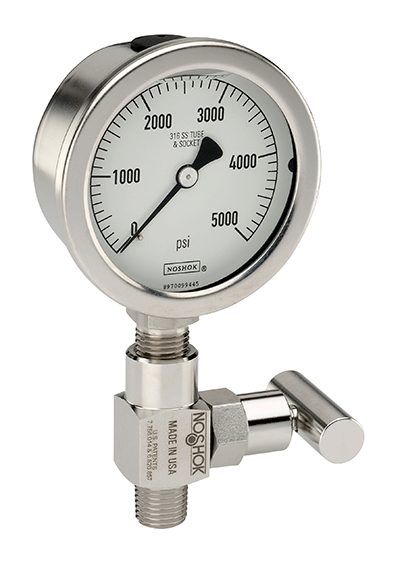
Liquid-filled gauge assembly. Image courtesy of Noshok
Liquid-filled gauges are used to damp vibrations and pulsations and minimize their effect on the gauge dial pointer. They are used primarily in dynamic and rugged applications where sudden shocks or pressure spikes might occur. They help to ensure the gauge maintains accurate readings for its rated lifecycle. This longer lifecycle means longer-term cost savings, as gauges do not fail and need to be replaced as often.
Because they are already filled with fluid and sealed, liquid-filled gauges are not impacted by condensation, thus cannot be obscured by moisture and ambient air ingress, as can happen with dry gauges.
Most liquid-filled gauges use glycerin to damp the pulsations, though in more extreme environments, silicone or mineral oil may be used to withstand temperature extremes. This liquid also serves to protect the internal components of the gauge, preventing friction and wear by adding a layer of lubrication. This in turn reduces corrosion by serving as a barrier to other contaminants that mat come in contact with the gauge.
Filed Under: Sensors & Gauges